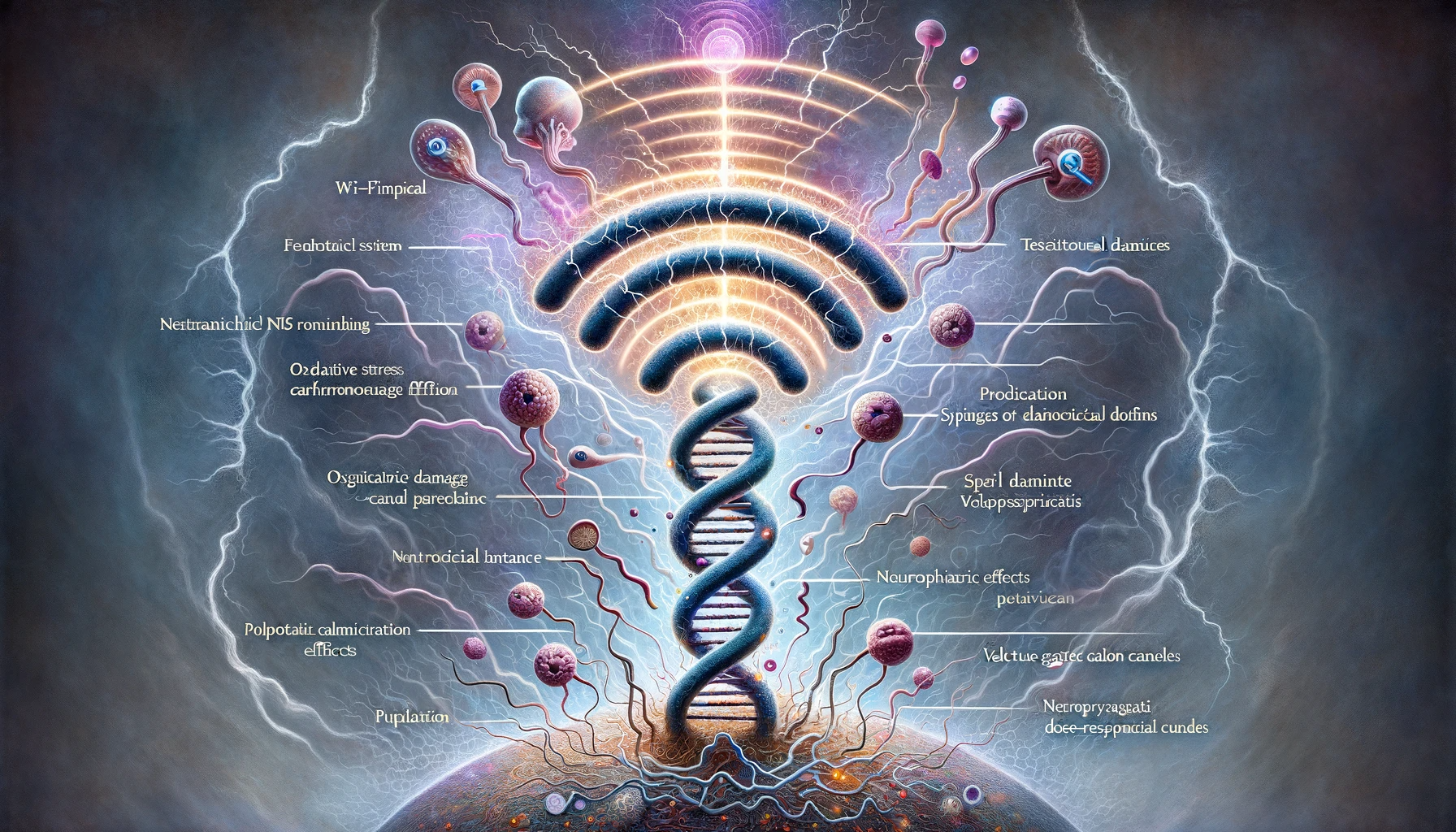The article “Wi-Fi is an important threat to human health“ by Martin L. Pall, published in “Environmental Research,” explores the potential health risks associated with Wi-Fi and electromagnetic fields (EMF). The article presents various findings and analyses to support its claims. Here is a summary of its key points:
- Health Impacts of Wi-Fi EMF Exposures: The paper reviews 23 scientific studies focusing on health-related effects in animals, human cells, and humans, suggesting that Wi-Fi causes oxidative stress, sperm/testicular damage, neuropsychiatric effects, apoptosis, cellular DNA damage, endocrine changes, and calcium overload.
- Mechanism of Action: The paper posits that Wi-Fi and other EMFs act mainly through voltage-gated calcium channel (VGCC) activation, leading to various downstream effects like oxidative stress and DNA damage.
- Characteristics of Non-thermal EMF Effects: The article discusses five properties of non-thermal EMF effects, such as the impact of pulsation and polarization, non-linear dose-response curves, cumulative effects, and their potential to affect young people more significantly.
- Wi-Fi versus Other EMFs: The paper asserts that the effects of Wi-Fi are not unique and are similar to those caused by other microwave frequency EMFs.
- Critique of Other Studies: The paper critically examines other studies, particularly the Foster and Moulder review of Wi-Fi, which claimed no significant health impacts from Wi-Fi exposure. Pall argues that their methodology was flawed and did not accurately represent real-world Wi-Fi exposure.
- Conclusion: The author concludes that the seven repeatedly found Wi-Fi effects are established and should be considered seriously in discussions about Wi-Fi safety.
This article contributes to the ongoing debate about the safety of Wi-Fi and other EMFs, providing a perspective that raises concerns about their potential health impacts.








